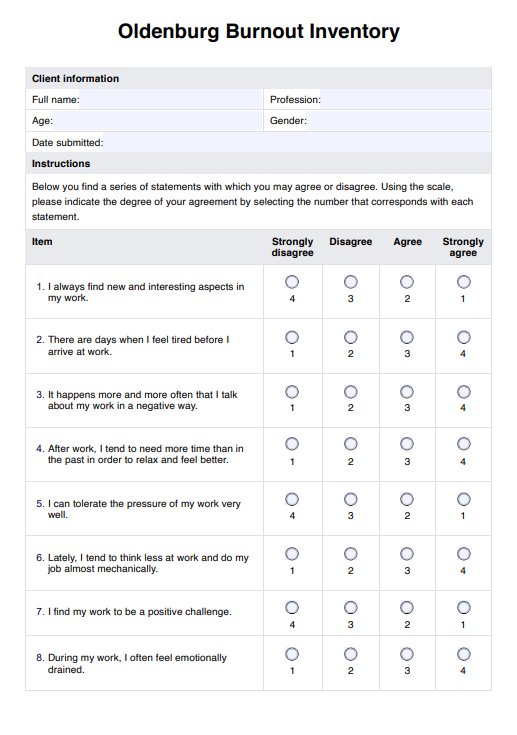It depends on how you use it. Usually, it can be accomplished in five minutes. If you conduct it like an interview, it might take longer than that.

Oldenburg Burnout Inventory
Use the Oldenburg Burnout Inventory to assess the severity of your patient’s burnout. Learn more about it through this short guide.
Oldenburg Burnout Inventory Template
Commonly asked questions
Evaluate your patient further using other assessments and interview them. You'll need enough information to develop an action plan tailored to your patient's needs. Other similar tools you can use include the Maslach Burnout Inventory and the Copenhagen Burnout Inventory. You can use these for consistency and to assess burnout in ways that you'll be able to tell if a patient/client has moderate burnout or if it's so severe that it needs to be addressed ASAP.
After conducting all the necessary assessments, your next goal is to help your patient/client prevent burnout or reduce the effects of their burnout on them. This means creating strategies that include making lifestyle changes, finding support systems, and finding healthy ways of coping.
EHR and practice management software
Get started for free
*No credit card required
Free
$0/usd
Unlimited clients
Telehealth
1GB of storage
Client portal text
Automated billing and online payments











